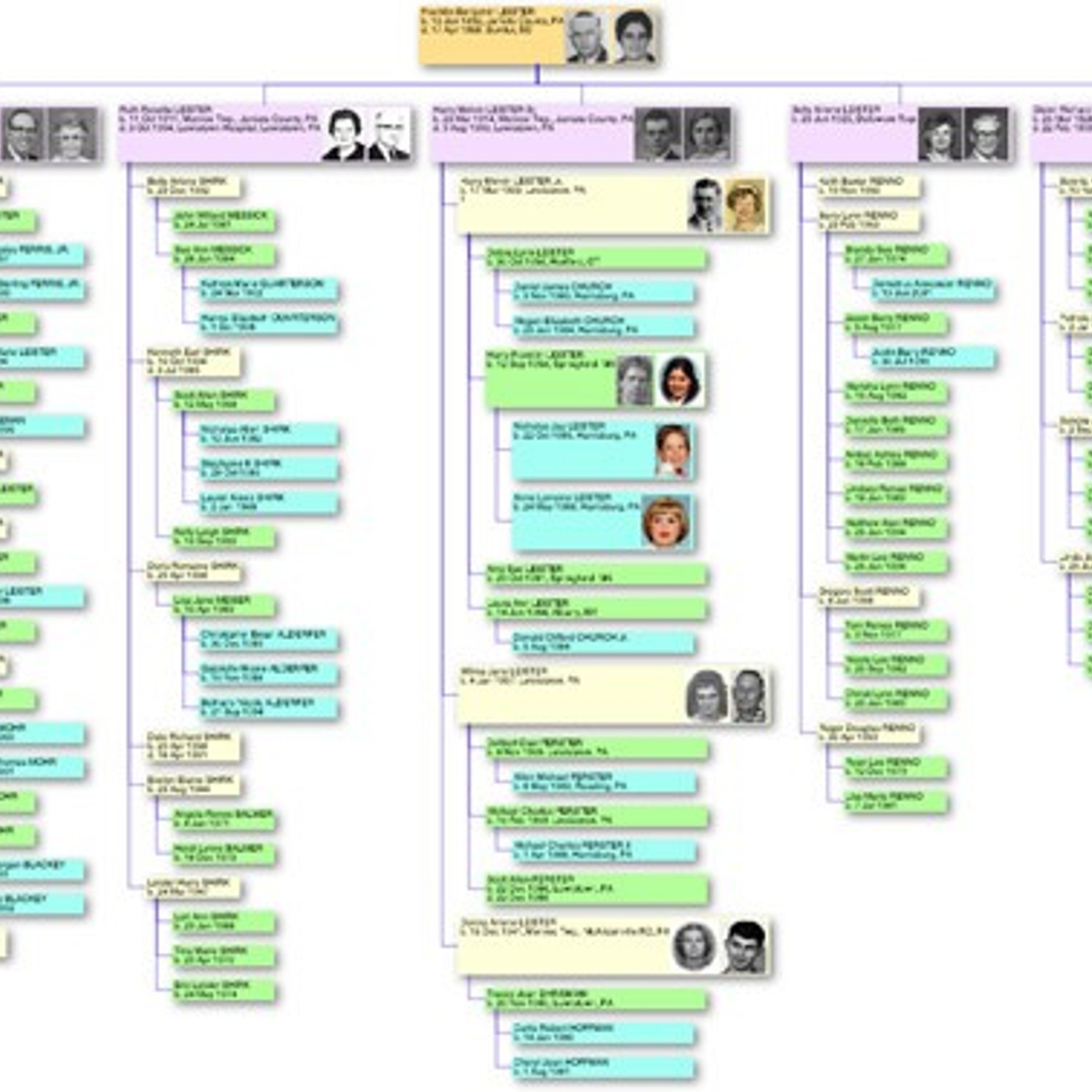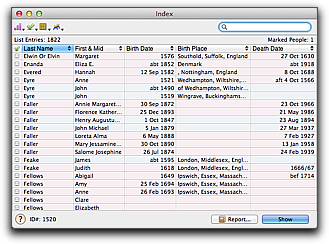Reunion Genealogy Program For Mac
| Original author(s) | Frank Leister |
|---|---|
| Developer(s) | Leister Productions |
| Initial release | 1988; 31 years ago |
| Stable release | |
| Operating system | macOS, iOS |
| Available in | Multilingual (6) |
| Type | Genealogy software |
| License | Proprietary |
| Website | www.leisterpro.com |
Your genealogy software is the repository for all the information you discover. It’s the main tool in your genealogy toolbox. Which one you choose will likely depend primarily on whether you use a Windows PC or a Mac. IFamily for Mac, a full-featured genealogy program for the Mac, was second at 4.95 out of 5 also on 14 ratings. Number 3 And the online program Famberry was third with 4.94 out of 5 from 61 ratings. We ranked a collection of family tree-making software from best to worst based on our testing and interviews with genealogy experts. Best for Mac Reunion 12.
Reunion is genealogy software made by Leister Productions, Inc., a privately held firm established by Frank Leister in 1984 located in Mechanicsburg, Pennsylvania. The company operates as a genealogy (family tree) software developer exclusively for macOS and iOS. Reunion was initially a Macintosh application, programmed in Apple's HyperCard. Version 4 was available for Windows and Macintosh until the Windows version was sold to Sierra in 1997.
Reunion provides methods to create, manipulate and generate reports about a family history. It has the capability to produce charts depicting family relationships and the ability to produce Web pages for publishing a family history online. Reunion can also be used to gather family statistics. It allows integration of images and movies into Reunion family files.
Reunion version history[edit]
The announcement pages for the respective versions offer more details as to the exact changes.
Reunion 12 was updated[1] in May 2018. New features include a new Duplicate Check, further improvements to syncing with Reunion’s mobile app 'ReunionTouch' for iOS, a new Citations List, improvements to Sorting, and a number of other upgrades.
Reunion 11 was announced[2] in April 2015. New features include better syncing with Reunion’s mobile app, Book creator to automatically generate PDF books, improved editing, and 'on-the-fly' relationships identification.
Reunion 10 was announced[3] in May 2012. New features include web searching, mapping of places, a tree view, a nav bar and a sidebar, image dragging from a web browser, side-by-side matching and merging people, and graphic relationship charts.
Reunion 9 was announced[4] on March 2007. This version became a universal binary Cocoa-based application, which runs under OS X. New features include Unicode support and a less 'modal' design, allowing index and source windows to remain open for easier access.
Reunion 8 was announced[5] on September 2002. This version became a Mac OS X native application, providing users of OS X and prior versions of the Macintosh operating system the ability to utilize the software. Charting was significantly enhanced with the move to Reunion 8.
Reunion 7 was announced[6] in May 2000 and among the changes seen at this time was the integration of SuperChart into a single Reunion application and the ability to have multiple family files open at one time.
Reunion 6 was announced[7] on November 1998 and saw the genealogy software change to include pictures into the family card view and introduced the Match & Merge tool that can be used to detect and remove duplicate records in the family file.
Reunion 5 was announced[8] on September 1997 and saw the introduction of drag and drop capabilities when working with the family card. Editing also became easier with start of tabbed windows to allow for faster, more efficient data entry.
Reunion 4 was the last version available for Windows.
Languages[edit]
- English
- The following translations have been completed by Reunion users:[9]
- Dutch (version 8 & 9)
- French (version 8 & 9)
- German
- Norwegian
- Swedish
External Tools[edit]
- Third party utilities/add-ons - for Reunion.
References[edit]
- ^Reunion 12 updated
- ^Reunion 11 announced
- ^Reunion 10 announced
- ^Reunion 9 announced
- ^Reunion 8 announced
- ^Reunion 7 announced
- ^Reunion 6 announced
- ^Reunion 5 announced
- ^http://www.leisterpro.com/doc/version9/altresource/reunion9altresource.php
External links[edit]

- Reunion Software - for macOS and iOS
- ReunionTalk - Forum
Today's Best Tech Deals
Picked by Macworld's Editors
Top Deals On Great Products
Picked by Techconnect's Editors
Leister Productions Reunion 10 for Mac
Leister Productions’ genealogy application, Reunion, has always been an easy-to-use, intelligently-designed tool for collecting and cataloging ancestry information. Reunion 10 is no different, adding useful features to an already excellent product and making it that much easier to keep track of who you are and where you came from.
As has always been the case with Reunion, data entry is exceedingly easy. When starting with a new blank database, the application opens in a Family View that displays several blue and pink boxes and asks you to add either a new male or female person to your database. Once you add your first family member, inserting additional family members is as simple as clicking a pink or blue box, either up or down your family tree, and entering that person’s information. The initial data entry process is so simple that you can create a fairly extensive family tree—sans detailed information—in a matter of minutes.
If you’ve used Reunion in the past you’ll find little has changed with regard to the overall user experience, but you will find a number of enhancements and refinements. First, Reunion has a new navigation Sidebar at the right of the main Reunion window that displays a searchable list of all your family members. Selecting any family member from within this list sets the focus of Reunion’s main window to the person you’ve selected. You can drag anyone who appears in the Sidebar on top of anyone appearing the Family View window and have a parent/child relationship created between those two people.
The left side of the main window now includes a feature called the Navbar, a set of shortcuts that provide quick access to several of Reunion’s major features. Using the Navbar, you can quickly switch between a Tree and Family view of your family data and gain quick access to tools for creating charts and reports. At the bottom left of the main window is a menu that changes the type of data displayed in the Sidebar on the right of the screen. For example, you can select Sources to see where you collected information for a selected family member or you can select Multimedia to see all the photos you’ve collected for a particular family member. While I like this feature, I did find the placement of the Sidebar menu to be a bit odd and would have preferred that it was somewhere closer to the data being displayed.

Leister Productions has made it much easier to add and manage images and other media you’ve added to your family database. Pictures now appear in all views of your family data and can be resized so they are easier to view. Clicking a photo for a family member displays a window containing all the media associated with that family member, and a multimedia usage report lets you see the files you have stored in your database, their size, and lets you see which of your family members are linked with what media files.
Reunion 10 includes some interesting new reports, one called On This Date and another called Obituary Report. On This Date lets you view the events in a selected family member’s life based upon a selected date. For example, if you want to know how many living relatives your uncle had the day he got married, you can select your uncle and then use the Reference Date menu to select the date of his marriage and you would see a complete listing of all your uncle’s living relatives at that time.
Best Genealogy Program For Mac
The Obituary Report uses information you’ve entered for an individual (including spouses, children, and other relatives) to create an obituary for that person as it might appear in the newspaper. The purpose of this report is to give you something to compare to a real obituary to help you find information that you may have missed when looking at an original obituary by itself.
The only complaint I have with Reunion is how easy it is to delete media files associated with a family member. Click a photo for a family member and press the delete key and the media file disappears without a warning and without an undo option. Not a very friendly feature for what is otherwise a superior application.
Bottom line
Reunion 10 remains the best genealogy tool I’ve had the pleasure to use. Simple data entry married with a number of ways to view, report, and present your information make Reunion 10 the only way you’ll want to collect, manage, and create your family’s history.
Legacy Genealogy Program For Mac
Leister Productions Reunion 10 for Mac
With its simple data entry, multiple data views and reports, Reunion 10 is one of the best genealogy apps for your Mac.
Pros
- Excellent tool for collecting your family data
- Intersesting reporting options
- Simple to master data entry, navigation, and reporting tools
Cons
- Menu for changing data viewed in the Reunion sidebar is located in an odd position
- No warning or undo option for accidentally deleting media files